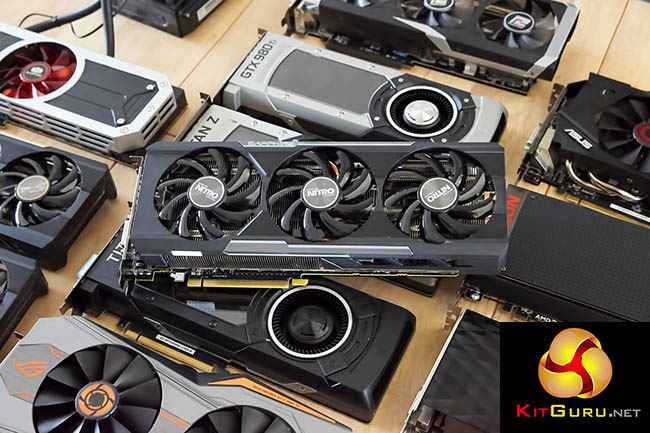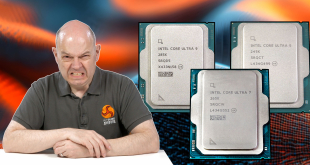Maintaining our performance graphs has been a full time job in the last couple of months – Nvidia and AMD have been hard at work updating their drivers and in this review we test with AMD’s Crimson 15.11.1 driver and the Nvidia 359.06 WHQL driver. We also add in a new range of tests at 1080p to supplement the results at 1440p and Ultra HD 4K resolutions.
We have also selected some new game sections to benchmark during our ‘real world runs’.
Additionally, even though it is not close to being finished, we wanted to include some findings from an early access build of the (Windows 10) Direct X 12 capable Ashes of The Singularity by Stardock (website HERE) – this uses the Nitrous game engine. We are confident this is not an indication of how the game will run when it reaches retail at a future date, but still, it is interesting to showcase today. You can buy it from STEAM, over HERE.
If you want to read more about our test system, or are interested in buying the same Kitguru Test Rig, check out our article with links on this page. We are using an Asus PB287Q 4k and Apple 30 inch Cinema HD monitor for this review today.
If you have other suggestions please email me directly at zardon(at)kitguru.net.
Sapphire R9 390 Nitro 8GB (Rev 2 w/ backplate). (1040mhz core / 1500 mhz memory) & (1,133mhz core / 1637 mhz memory)
Comparison Cards on test:
Powercolor PCS+ Radeon R9 380X Myst Edition 4GB (1,020 mhz core / 1,475 mhz memory)
Sapphire Radeon R9 Nitro 380X (1,040 mhz core / 1,500 mhz memory)
ASUS Strix R9 380X DirectCU II OC (1,030 mhz core / 1425 mhz memory)
PowerColor Radeon R9 390 PCS+ (1,010 mhz core / 1,500 mhz memory) & (1,150 mhz core / 1,693 mhz memory).
Sapphire R9 295X2 (1,018 mhz core / 1,250mhz memory)
AMD Fury X (1,050 mhz core / 500 mhz memory)
Nvidia GTX Titan Z (706 mhz core / 1,753 mhz memory)
Nvidia GTX Titan X (1,000 mhz core / 1,753 mhz memory)
Asus GTX980 Strix (1,178 mhz core / 1,753 mhz memory)
Nvidia GTX980 Ti (1000 mhz core / 1,753 mhz memory)
Palit GTX970 (1,051 mhz core / 1,753 mhz memory)
Sapphire R9 390X Tri-X 8GB (1,055 mhz core / 1,500 mhz memory)
Sapphire R9 390 Nitro 8GB (1,010 mhz core / 1,500 mhz memory)
Sapphire R9 380 Nitro 4GB (985 mhz core / 1,450 mhz memory)
Palit GTX960 Super JetStream (1,279 mhz core / 1,800 mhz memory)
Software:
Windows 10 64 bit
Unigine Heaven Benchmark
3DMark 11
3DMark
Fraps Professional
Steam Client
FurMark
Games:
Ashes Of the Singularity DX12 mode (early access build)
Grid AutoSport
Tomb Raider
Grand Theft Auto 5
Metro 2033 Redux
We perform under real world conditions, meaning KitGuru tests games across five closely matched runs and then average out the results to get an accurate median figure. If we use scripted benchmarks, they are mentioned on the relevant page.
Game descriptions edited with courtesy from Wikipedia.
 KitGuru KitGuru.net – Tech News | Hardware News | Hardware Reviews | IOS | Mobile | Gaming | Graphics Cards
KitGuru KitGuru.net – Tech News | Hardware News | Hardware Reviews | IOS | Mobile | Gaming | Graphics Cards




It may be faster than the 970GTX, but I’d hardly say they cost the same. With the added power consumption, this baby will certainly cost you a lot more in the end.
Only if you have the card for 5+ years iirc. Even a gamer’s PC spend most of their time off or in idle, it will have a minimal effect on your power bill.
A 100 watt difference will have a lot more impact than that. Even with the idle time (during which the 970 actually consumes more) it’ll cost you a few quid each year. After five years, it could easily run upwards of 10% of the price you paid, and you don’t have to game a lot to get there.
100W for a few hours every now and then, not really. And the point is it only starts becoming an amount you notice after 5 years, have you ever used a single video card for 5 years?
Assuming a 5 hour per day average of game play and playing everyday for a month, 100 watts equates to 15KWH more per month. Now in the US the average cost per KWH is around $0.12 so this would come out to $1.80 per month, so less than $24 per year in total energy cost increase.
For that extra minor monthly cost your getting better performance a much more robust memory system which could mean further gains as modern games use more memory.
5 hours a day every day for a year? Someone needs to get outside.
Which means a normal gamer would never notice the difference, but that being said a gamer wouldn’t notice the 8GB of memory as the card starts to dip in performance before the memory is used – if the fury or 980ti had 8gb of memory, that’d be different.
MSRP of the 390, according to this article, is about 270 quid.
If your estimate of power cost is true, then after 5 years, at a power cost of “upwards of 10% of the price you paid,” that leads to 27 quid.
Just to be nice to your theory, let’s round that up to 30 quid. Also rounds out the math nicely.
So over 5 years, you’ve spent 30 quid more on running the R9-390 than you would running the GTX 970. That’s 6 quid per year, or 0.50/month.
My questions for you, then:
One, does the R9-390 outperform the GTX 970 to such a degree that the 0.50/month is worth it?
Two, how long would one have to keep using the R9-390 in order for the power cost (at 0.50/month) to make up for the difference in purchase price between the two cards?
Three, be completely honest now, how badly will an extra 0.50/month on your electric bill mess with your monthly budget? Seriously?
Four, how long do you plan to keep that R9-390 or GTX 970? Will it be anywhere near as long as it would take to make up the difference in purchase price?
Five, do you actually care that much about power usage and power cost? Or are you grasping at any reason you can find to justify (to yourself) the brand preference you have chosen?
Wow to be up there in GTA 1080p (no AA?), and couldn’t offer number for AoS at 1440p?
Giving that Palit GTX970 appears to be that “Jetstream from September 23rd, 2014” (is that was what was used and then supposedly down clocked to reference?) because that normally is with a 1304Mhz Boost! I’d bet if GTA5 got a little AA that 970 would drop more than this 390 Nitro. The sad part is the Jetstream is a mix-bag card, built with on a reference “smurf” PCB, while Boosted well past other it like getting a Uber card and a non-beefy cooler. It might well ran good out of the box, but looking at what you get it’s a terrible value. I mean for not even 5% more this beautiful Sapphire Nitro that exudes quality and value.
And OMG if buy this much card a worrying about the power your using, do yourself a favor and just stop gaming altogether. While you sit there wasting time gaming and adding to Global Warning, give it up and do something useful for mankind.
While you raise valid points (except for 5 obviously, but I’ll ignore that one), these points are always valid for every minor increase in your energy bill. So you’re right, the price is probably not relevant for this one product. So in that sense, the price difference is irrelevant.
However, I am very meticulous about my energy bill (utilities in general actually), possibly too much so. If it’s fine for one product to spend a bit more, it could be fine for all products, resulting in an overall higher energy bill (and not unimportantly, environmental cost). And if you add 50 pence for a few dozen products, it becomes a lot quickly. Which I guess actually does address the first part of question five.
Yes actually 😀 which is why I’m looking for a new one 😉
So, here the 390 is slower than the 970 at 1080p on every game.
https://www.youtube.com/watch?v=x_5EbUL3BmY
It most cases yes the graphics card would run out of horses before Vram but it did a great job in black ops 3 even when using 7.8GB of Vram
Anyone who complains about video card power use but hasn’t replaced all
incandescent bulbs with LED light bulbs is a hypocrite. Save 100 watts
for $5.